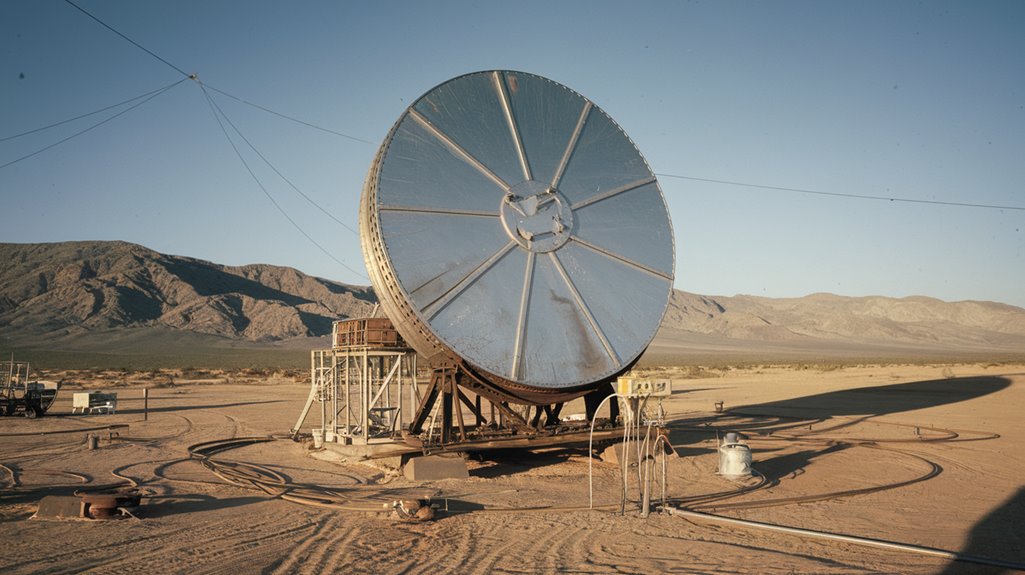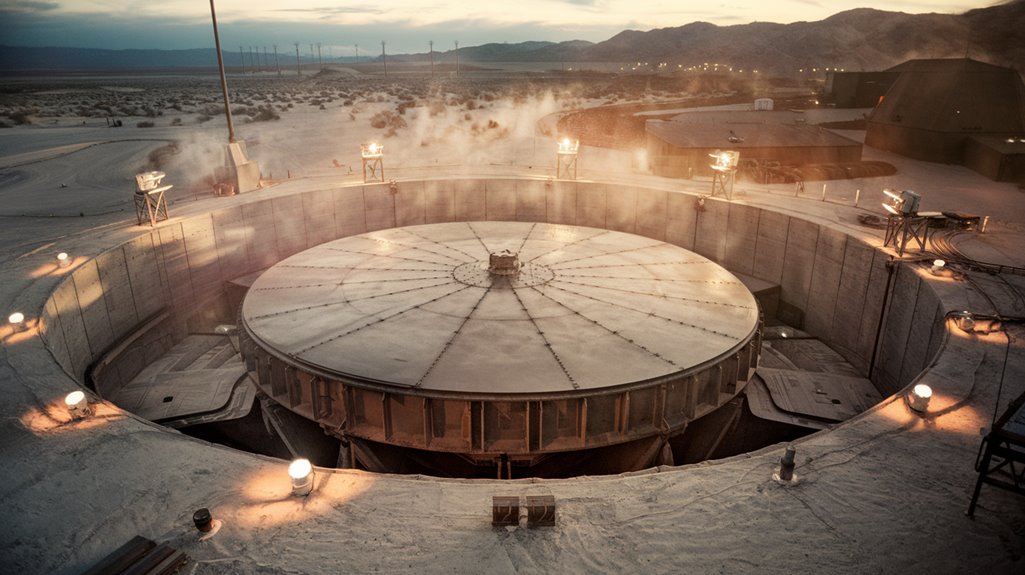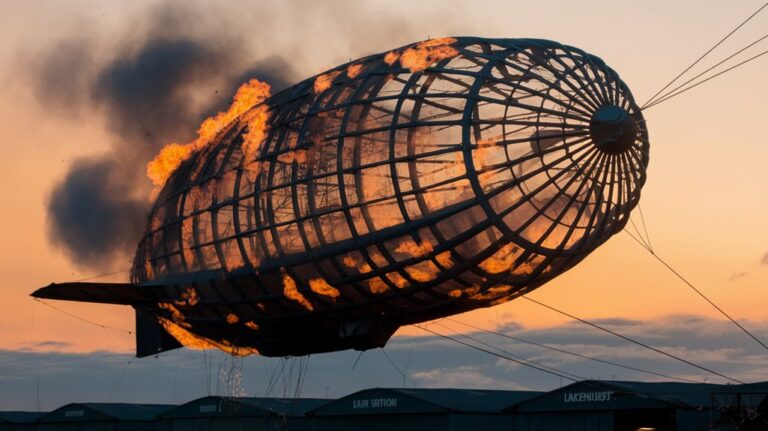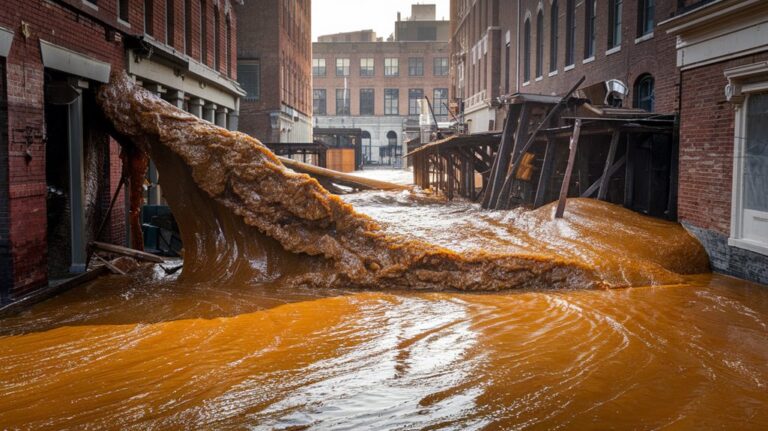Did We Accidentally Launch a Manhole Cover Into Orbit?
You've probably heard about humanity's first objects in space: Sputnik, Explorer 1, or even early test rockets. But there's a peculiar tale from 1957 that might challenge what you think you know. During an underground nuclear test in Nevada, scientists may have accidentally created the fastest man-made object ever – a massive steel cap that could have reached escape velocity. While some say it vaporized, others believe this accidental space launch beat Sputnik by months.
The Pascal-B Nuclear Test: An Accidental Space Launch
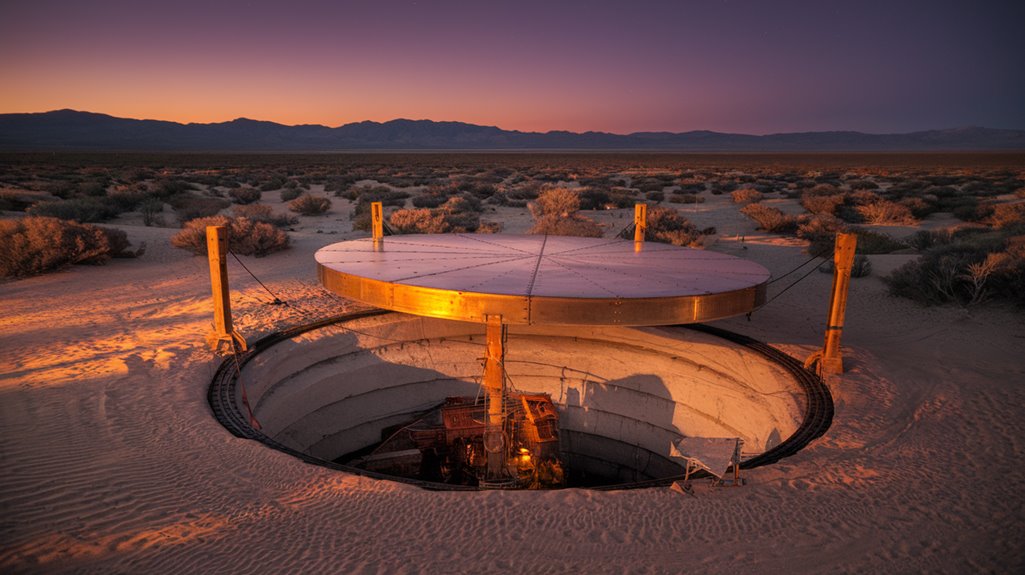
While underground nuclear tests were meant to contain explosive forces, the Pascal-B test of 1957 accidentally created what might've been humanity's first unintentional space launch.
At Nevada's Test Site, scientists placed a 300-ton nuclear device 490 feet underground, attempting to achieve nuclear containment. They sealed the shaft with a 2,000-pound iron lid, following standard manhole specifications of the time. Dr. Robert Brownlee led the design of the concrete cap system.
What happened next stunned everyone. The explosion propelled the massive iron cover upward at an estimated 41 miles per second, captured by a high-speed camera recording one frame per millisecond.
You'd think such a substantial piece of metal would be easy to locate, but the cover was never found. Scientists believe it likely vaporized due to intense compression heating as it raced through the atmosphere. This extraordinary event occurred during Operation Plumbbob, a series of 29 nuclear tests conducted from May to October 1957.
Breaking Down the Underground Experiment
Despite its unintentional nature, the Pascal-B nuclear test's setup reveals fascinating details about this accidental space launch attempt.
Scientists dug a 400-foot hole, placed a nuclear bomb at its bottom, and capped it with a half-ton concrete manhole cover.
What happened next defied all expectations. The nuclear explosion's yield exceeded predictions by 50,000 times, vaporizing the concrete and creating immense pressure.
The explosion caused the steel plate to transform into a bullet-like shape, enabling it to potentially penetrate the atmosphere more effectively.
Led by scientist Robert Brownlee, the experiment was designed to explore safer underground nuclear testing methods.
You'd be amazed to learn that the manhole cover reached speeds of 130,000 mph – appearing in just one frame of high-speed footage.
While many scientists believe this incredible velocity could have launched the cover into space, others theorize it disintegrated in the atmosphere.
Among all nuclear experiments, this one stands out for potentially creating the first human-made object to reach space, even before Sputnik.
Calculating the Fastest Man-Made Object
The manhole cover's incredible speed raises an interesting question: how does it compare to humanity's other fastest creations?
At an estimated 125,000 mph, the manhole cover's object speed surpassed most of our carefully engineered spacecraft. While the Parker Solar Probe now holds the official record at 394,736 mph, the manhole physics experiment from Operation Plumbbob still outpaced many notable space vehicles. The experiment occurred during Operation Plumbbob in 1957, making it one of the earliest high-speed achievements of the nuclear age. The probe achieved this phenomenal speed by using gravitational assists from Venus.
Here's how the manhole cover compared to other notable speed achievements:
- Faster than Voyager 1 (38,610 mph), our most distant spacecraft
- Quicker than the Helios satellites (157,078 mph), which were specifically designed for high-speed solar observation
- Nearly five times faster than the Space Shuttle's orbital velocity (17,500 mph)
Though unintentional, this accidental experiment demonstrated remarkable speeds that would take years for engineers to surpass deliberately.
Scientific Debate: Space Travel or Vaporization
Since its legendary launch during Operation Plumbbob, scientists have debated whether the manhole cover actually reached space or vaporized in Earth's atmosphere.
The scientific implications of this event continue to intrigue researchers, with compelling evidence supporting both scenarios. The test was initially designed as a safety experiment to study nuclear containment.
Those arguing for space travel point to the cover's incredible speed of over 37 miles per second – more than five times Earth's escape velocity. They suggest that if the explosion deformed the cover into a conical shape, it could have penetrated the atmosphere.
However, skeptics emphasize that the intense heat and friction likely vaporized the metal instantly. While high-speed camera footage helped estimate the cover's velocity, no definitive proof exists for either outcome. This nuclear test occurred just months before Sputnik's historic launch in October 1957.
Small-scale experiments have provided some insights, but the manhole cover's ultimate fate remains one of science's most intriguing mysteries.
The Race to Space: Before Sputnik
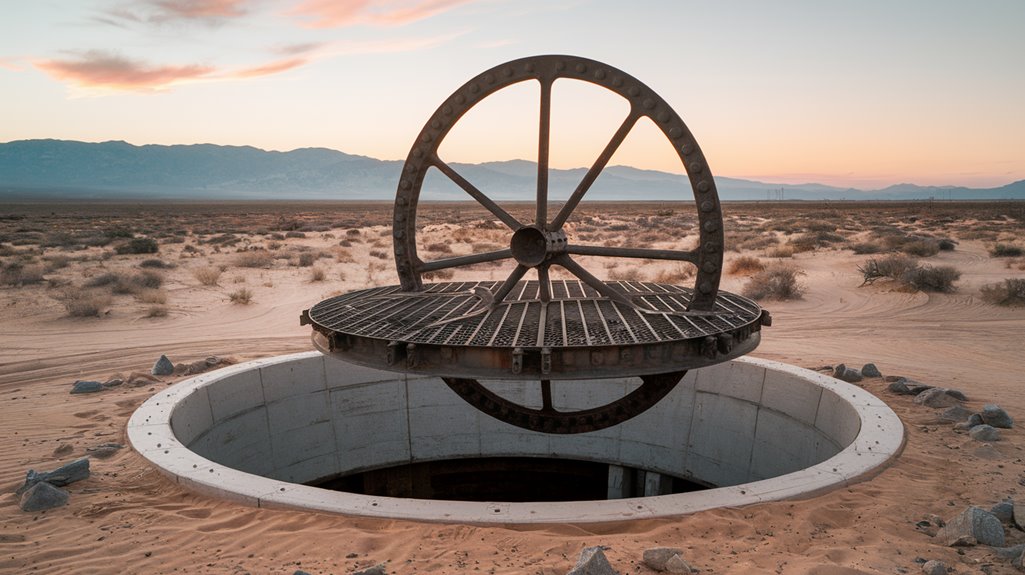
While debates about the manhole cover's fate continue, space exploration had already begun years before this peculiar event. You might be surprised to learn that the race to space started in the mid-1940s with V-2 rockets, originally designed by Nazi Germany but later repurposed for peaceful exploration. The German V2 rocket made history when it became the first to cross the Carmen line in 1942.
These early experiments laid the groundwork for future space achievements. This pioneering work would eventually lead to Sputnik's historic launch in 1957.
Key milestones before Sputnik include:
- The first manmade object reaching space in 1944 via a V-2 rocket
- The capture of space photographs from 105 km altitude in 1946
- The successful launch of fruit flies into space in 1947
These achievements demonstrated that space exploration was possible well before the famous Sputnik launch in 1957.
Scientists and engineers worked diligently to improve rocket technology, transforming weapons of war into tools for understanding our universe.
Legacy of Operation Plumbbob's Peculiar Achievement
Long after Operation Plumbbob concluded in 1957, its accidental manhole cover launch remains one of science's most fascinating what-ifs.
While Sputnik officially claimed the title of first human-made object in space, you might wonder if a 900-kilogram iron disc actually beat it there by a few months.
 five times escape velocity made it entirely possible for the cover to have left Earth's atmosphere completely.
five times escape velocity made it entirely possible for the cover to have left Earth's atmosphere completely.
This peculiar piece of nuclear legacy continues to spark debate among scientists and historians.
The incident occurred during the Pascal-B test, which was one of 43 military effects tests conducted during the operation.
You'll find no concrete evidence of the manhole cover's fate – whether it vaporized in the atmosphere or escaped Earth's gravity well at its estimated speed of 130,000 mph.
While the incident wasn't planned, it demonstrated the raw power of nuclear testing and left us with an enduring mystery.
It's a reminder that even in carefully controlled experiments, unexpected outcomes can lead to remarkable possibilities.

